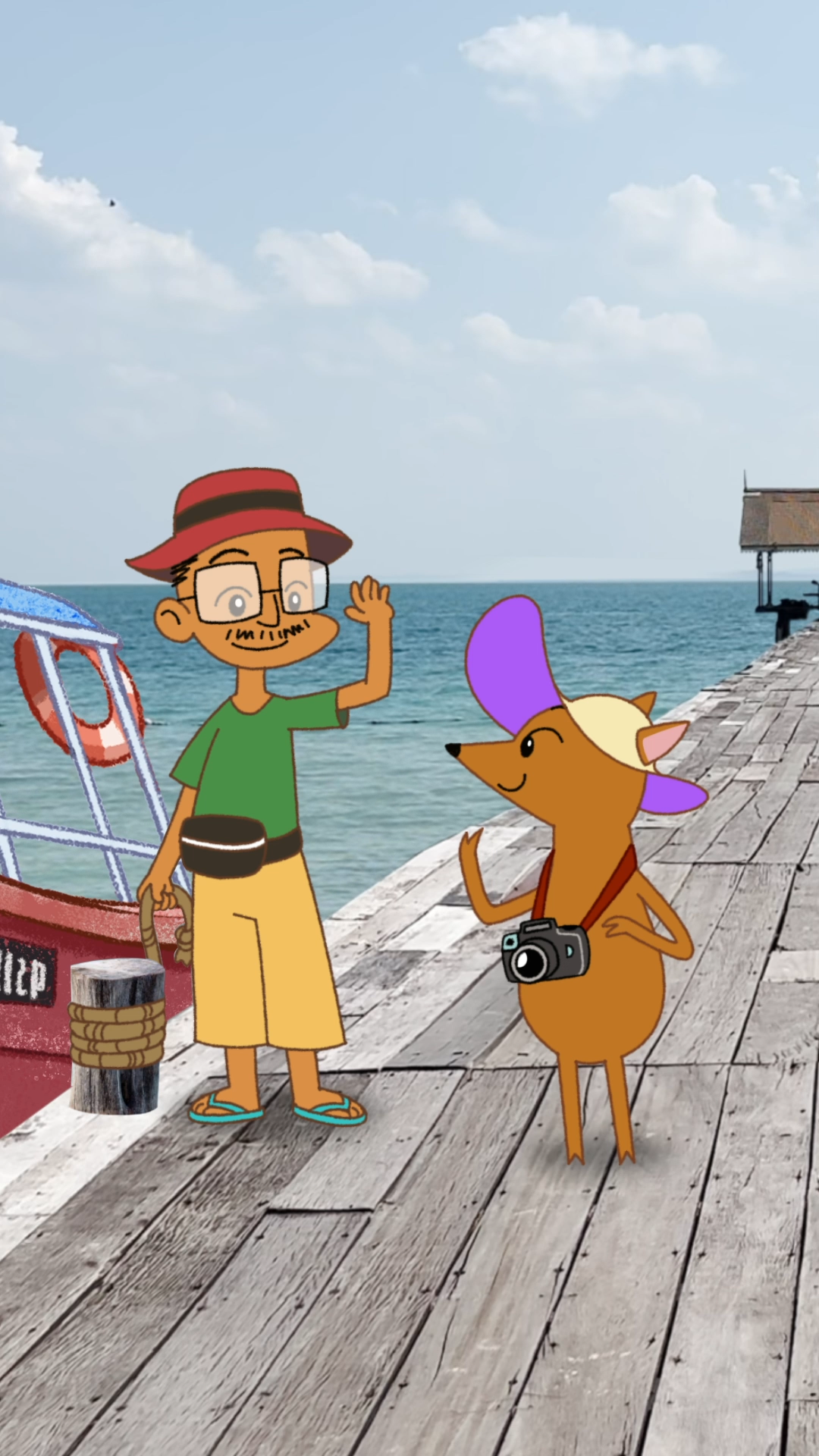Animation vs Live-Action: The Real Cost Comparison for Brands
Key Takeaways
Animation production delivers predictable timelines because there are no weather delays, talent conflicts, or location issues to manage.
Animation requires a higher upfront investment but offers dramatically lower revision and reuse costs since you build once and deploy infinitely.
Your return on investment depends entirely on content shelf life: the longer you use it, the more animation wins economically.
Why This Comparison Feels So Confusing
Comparing animation and live-action is tricky because they operate differently.
Live-action is typically budgeted per project. Each video is a separate production.
Animation builds reusable assets that serve multiple projects.
Think of it like buying individual plane tickets versus investing in a travel membership: a transactional approach versus an infrastructural one. The real question is not “which costs less?” but “which fits your content strategy?”
A live-action video might cost less upfront, but it’s hard to change, repurpose, or build into a consistent visual system. Animation, by contrast, creates assets that last and scale across campaigns.
The Real Cost Comparison
Here's what clients actually pay for and where the numbers surprise people:
| Cost Factor | Live-Action | Animation |
|---|---|---|
| Initial Production | Moderate to high upfront costs, including crew, talent, locations, and equipment | Higher upfront investment in character design, rigging, and visual system development |
| Revisions & Changes | Expensive: requires reshoots, reassembling crew, rebooking locations and talent | Cost-effective: redraw specific frames or update digital elements without full reproduction |
| Updates & Localization | Expensive: new shoots required for different markets or messaging changes | Minimal: swap text, audio, or minor visual elements while keeping core assets |
| Reuse for Series/Campaign | Costs remain consistent: each new video requires a comparable production effort | Costs decrease dramatically: reuse established rigs, characters, and visual systems |
| Timeline Predictability | Variable: dependent on weather, talent availability, location permits, and logistics | Highly predictable: controlled studio environment eliminates external dependencies |
| Cultural Adaptation | Complex and costly: requires recasting, new shoots, and market-specific production | Streamlined: same characters work across markets with contextual adjustments |
The pattern becomes clear: live-action costs scale linearly, while animation costs scale with dramatically increasing efficiency.
Every additional live-action video requires comparable effort to the first. Every additional animated video leverages the infrastructure you’ve already built, making your second, fifth, and tenth videos significantly more cost-efficient than the first.
Timeline & Flexibility: Where Animation Becomes the Safer Bet
Let's talk about what keeps marketing directors up at night: schedule risk.
Live-action production involves coordinating locations, permits, weather windows, talent schedules, and crew availability. These variables naturally build contingencies into both timelines and budgets. With animation, production happens in a controlled environment—no weather delays, no location dependencies, no scheduling conflicts. When we commit to a timeline, we can deliver on it consistently.
The bigger advantage is creative flexibility. Live-action changes require rescheduling, rebooking, and reassembly. Animation changes happen quickly. Different outfit, different background, testing multiple approaches, all within the same production timeframe. This flexibility makes animation particularly valuable during strategy phases when you're still refining your message.
How Audiences Actually Perceive Each Medium
Let's talk about how your audience experiences these two approaches, because perception shapes engagement.
Live-Action: The Reality Paradox
Live-action carries a clear promise: “this happened in the real world.” Seeing real people in real locations can create strong connections, making live-action ideal for testimonials, behind-the-scenes stories, or documentary-style content.
However, in the world of branded social media videos, there’s growing pressure to feel “authentic.” Many companies lean into behind-the-scenes style content to show their humanity and transparency. But when this content becomes too polished, or too similar across brands, it risks feeling less genuine.
We worked with a fintech client who initially wanted live-action testimonials. “Real customers, real stories,” they said. But on camera, the interviews felt stiff. Lighting was inconsistent, and legal disclaimers made the tone formal. The final result didn’t feel as spontaneous or emotionally honest as they had hoped.
Capturing reality is challenging. Unlike animation, live-action is constrained by lighting, talent performance, location logistics, and other real-world factors. Even with careful planning, these constraints can dilute the emotional impact.
Animation: Stylisation as Honesty
Animation signals something fundamentally different: This brand made a creative choice. This story was designed. Someone thought about how this should feel.
Stylisation isn't a limitation, it's a feature. You're not trying to fake reality; you're creating a visual language that matches how your audience actually feels about your message. Abstract concepts become tangible. Complex ideas become clear. Emotions are amplified through intentional design choices.
For that same fintech client, we pitched 2D instead: stylised characters experiencing real financial stress, real relief, real emotions—but with visual clarity you can't capture with a camera crew. The result? Higher engagement, more shares, and comments saying it felt “more honest” than typical testimonials.
Abstraction does not mean less authentic. It can feel more authentic because it communicates how emotions are experienced, rather than merely how reality looks. Younger audiences, accustomed to animated storytelling across games, social media, and streaming, perceive animation as intentional, trustworthy, and emotionally resonant.
Reuse & Long-Term ROI: The Math That Changes Everything
Animation is more than a one-off expense; it’s an investment in reusable content infrastructure.
The Studio Model (And Why It Works for Brands)
There's a reason studios create sequels and franchises. Once a beloved character is designed and rigged, creating new stories with that character becomes significantly more efficient.
Studios understood this decades ago, and the same principle applies to brand content.
Here's how it works: Your first animated video includes character design, rigging, visual system development, and the first story. Your second video reuses those established assets—you're just telling a new story. Your fifth video? The cost continues to decrease as you build on existing infrastructure.
Compare that to live-action, where each video requires similar production effort regardless of whether it's your first or fifth.
Over time, animation can deliver more content for less effort, making it a highly effective long-term strategy.
The Mascot Advantage
An animated character is a versatile, long-term asset for your brand. Think of characters like Po in Kung Fu Panda or the heroes in Ice Age. Once these characters are created and beloved, producing new stories becomes faster, easier, and more cost-effective.
Brands can apply the same principle. An animated character can:
Serve as a brand spokesperson without logistical constraints
Appear across video, social media, print, and experiential campaigns simultaneously
Build consistent brand recognition and equity over time
Because the character is fully owned and adaptable, it can exist in multiple contexts at once, delivering a unified, memorable brand presence while supporting multiple campaigns efficiently.
Future-Proofing Content
Markets evolve. Regulations update. Your messaging adapts.
With live-action, updates often mean organising new shoots. Reassembling crews, rebooking locations, coordinating talent schedules, these updates can represent a significant portion of your original production cost.
With animation, updates happen efficiently. Need to change pricing information? Update the text. Modify product features? Redraw specific elements. Localise for different markets? Adjust text and record a new voiceover while keeping the core animation intact.
The content you create today stays relevant and editable for years.
The Southeast Asia Context: Why Animation Makes Sense Here
Producing content in Southeast Asia comes with unique considerations that affect both production approach and budget.
The Local Production Reality
Whether you're creating content for Thailand, Vietnam, Indonesia, or any single Southeast Asian market, certain production realities shape your options.
Live-action considerations in the region:
Location availability and permit processes vary significantly by city and region
Weather patterns, especially monsoon seasons, can impact outdoor shoot schedules
Talent pools and production crew availability differ across markets
If you later want to adapt content for neighbouring markets, you're often looking at new productions with market-specific casting and cultural considerations
Animation's flexibility in Southeast Asia:
Climate-controlled production means no weather-related delays or seasonal limitations
Characters and visual styles can be designed to feel locally relevant without being locked into specific cultural markers.
Content created for one market can be more easily adapted if you decide to expand regionally later.
Updates and revisions don't require reassembling physical production teams
Quality Meets Accessibility
Southeast Asia has developed a strong animation talent pool. Studios in the region deliver high-quality work with production values that match international standards, often at more accessible price points than Western markets.
This creates an opportunity: brands can invest in polished animation that might be cost-prohibitive elsewhere, making sophisticated storytelling achievable within practical budgets.
For brands operating in Southeast Asia, whether local companies or international brands entering the market, animation offers a way to create content that feels intentional and designed while maintaining the flexibility to evolve as your market presence grows.
Questions to Ask Before Choosing Between Animation & Live-Action
When deciding between animation and live-action, the goal isn’t to pick a winner; it's to understand which tool supports the message, timeline, and longevity of the content. These questions help reveal what fits best:
1. How long will this content stay relevant?
If the message needs to evolve or stay in use for months, consider how easily the medium can be updated or expanded. Animation typically adapts more smoothly; live-action suits fixed, time-specific stories.
2. Will this need revisions or localisation?
Some content requires new versions, languages, or updated details over time. Animation allows targeted adjustments without reassembling a full production team, while live-action works best when the message is unlikely to change.
3. What are you actually showing?
If the story involves ideas, systems, or processes that aren’t visible in the real world, animation provides clarity. When physical environments, human presence, or tangible objects are central, live-action brings natural authenticity.
4. Is this a single piece or part of something ongoing?
Ongoing storytelling benefits from assets that can be reused or evolved. Animation scales easily across multiple touchpoints; live-action is strongest when capturing a specific moment or one-off narrative.
The Hybrid Option
Some stories are most effective when different media work together. Animation can bring clarity and emotional focus while visually representing authentic environments.
In our Sang Kancil and Sustainable Tourism project, animated characters guided the narrative through beautifully crafted representations of Malaysia’s diverse landscapes. This combination made complex environmental topics more engaging and easier to understand.
Conclusion
Animation isn't more expensive than live-action.
It asks you to invest upfront in infrastructure that pays dividends over time. It trades the illusion of cheap individual projects for the reality of cost-effective content systems.
In 2025, brands need to produce more content, across more platforms, for more markets, with more flexibility than ever. That infrastructure model is what makes sense.
The question isn't whether animation costs more. The question is whether you're thinking about content as a one-time transaction or a long-term strategy.
If it's the latter, the math speaks for itself.
Ready to Start Your First Animation Project?
At ROUGE Collective, we've built our studio around this reality. We're here to help you figure out what kind of content system serves your business, and then build it with you.
Sometimes that's pure 2D animation that gives you maximum flexibility and reusability. Sometimes it's 3D animation for cinematic, dimensional storytelling. Sometimes it's VFX and compositing that blends the best of both.
But most often? It's a thoughtfully designed animation system that gives you the flexibility, control, and long-term ROI that modern brands need.
Book a strategy session with our team and we'll help you figure out whether animation (or a hybrid approach) makes sense for your brand, your audience, and your budget.




